In the last episode of Life in Squares, the BBC's mini-series about the bohemian lives of the Bloomsbury Group, Vanessa Bell and her lover Duncan Grant started to paint a fire surround. The colours were bright and the figures were Matisse-like. Not the usual kind of decoration you would expect in an old farmhouse on the South Downs, but then not much was usual about the fascinating household that Vanessa ran there from 1916 until her death in 1961.
Vanessa and Duncan moved to Charleston on the suggestion of Vanessa's sister Virginia Woolf in order that Duncan and David Garnett, with whom Duncan was in a relationship, could avoid the conscription of World War I by working as farm labourers. While the men were out farming, Vanessa looked after her two sons from her open marriage to Clive Bell as well as Angelica, the daughter she had with Duncan. She would also paint everything from expansive canvases to the walls themselves.
As a result, the interiors at Charleston are a riot of bohemian colour, rich patterns and fabulous art that ranges from work by Duncan and Vanessa to pieces by Renoir, Picasso and Delacroix.
Scroll down for a photographic tour of the country's last Bloomsbury interior.
The studio
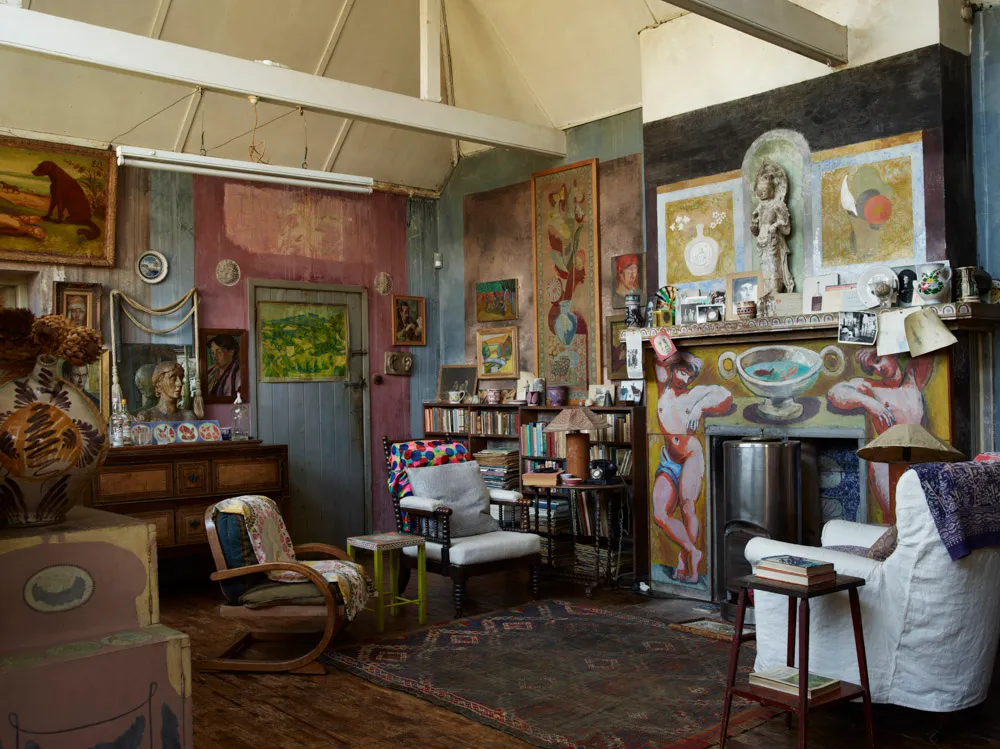
Built in 1925, the studio was initially used by both Vanessa and Duncan. Vanessa later adapted an attic room into her studio, and Duncan used this one until his death in 1978. A plaster bust of Virginia Woolf is displayed on the 18th-century Italian chest of drawers. To its right is a portrait of Ethel Grant, Duncan's mother, who was responsible for many embroideries throughout the home. Duncan painted the figures on the fireplace in around 1932, while Vanessa designed the tiles behind the fireplace in the late 1920s.
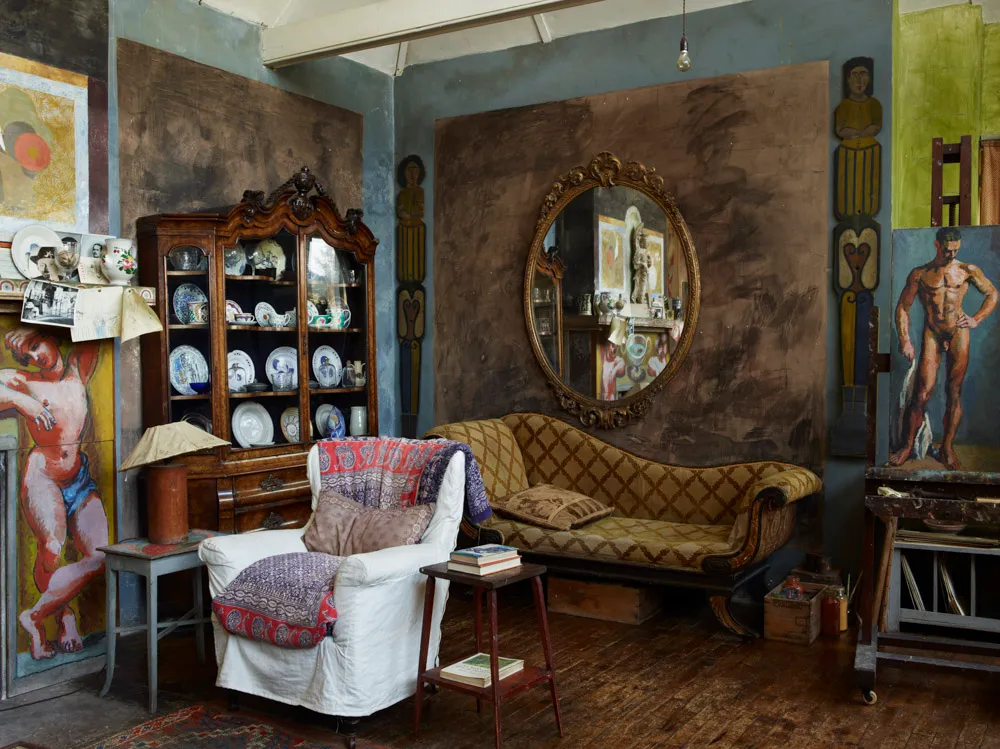
The 19th-century walnut cabinet in the studio was once owned by William Makepeace Thackeray. The chaise and mirror belonged to Walter Sickert who left them in his London studio (which Duncan later took over). The nude (on the right) was painted by Duncan in around 1934.
The dining room
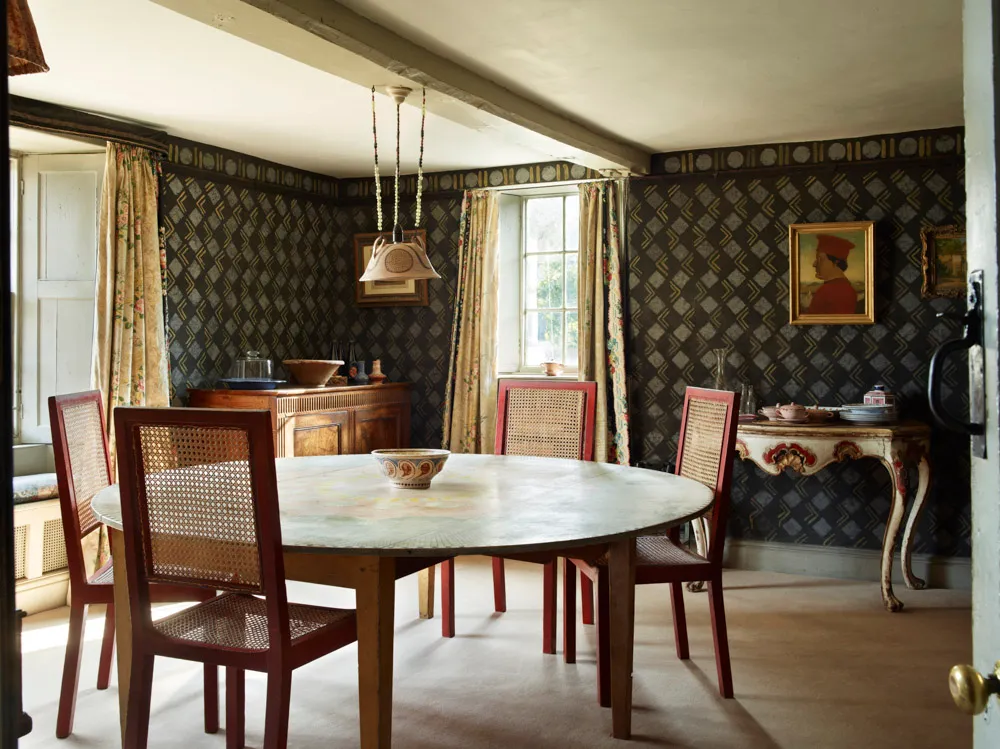
The stencilled wallpaper in the dining room was created by Duncan and two of Vanessa's children, Quentin and Angelica, in 1939. The yellow and purple chevron and diamond design on a black background would have been extreme in its day. Duncan enjoyed copying old master paintings, and his copy of The Duke of Urbino by Piero della Francesca hangs above a Venetian side table.
The study
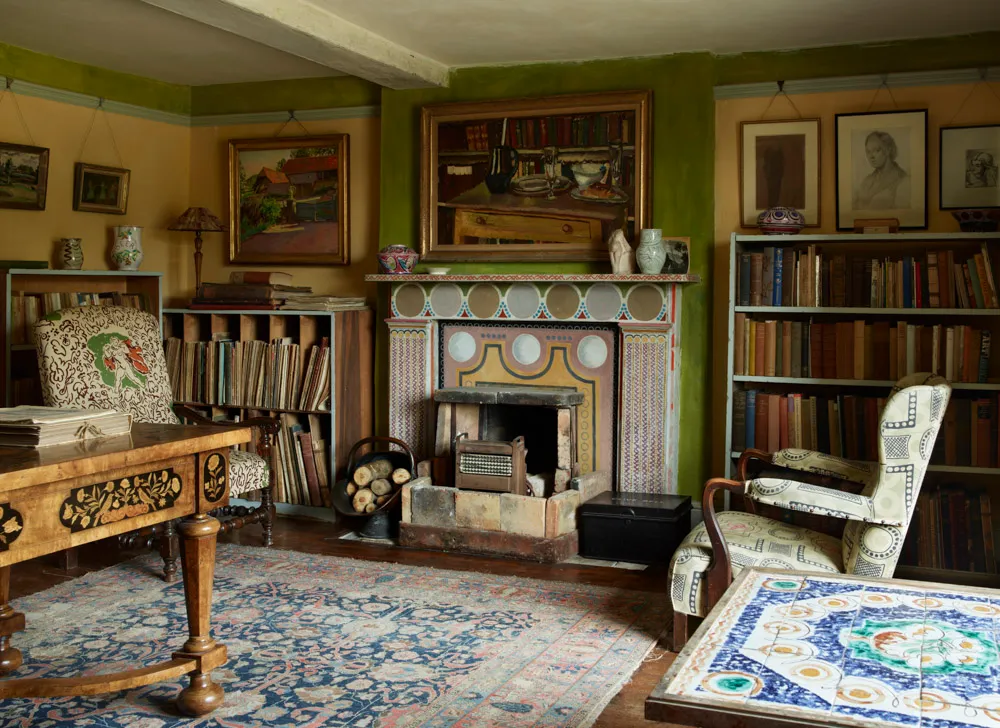
Although Vanessa and her husband Clive Bell had separated, Clive was a frequent visitor at Charleston. In 1939, he moved there and this room became his study. Vanessa decorated the fireplace with circle and hatch designs in around 1925-30. The still life above the fireplace is by Duncan.
The garden room
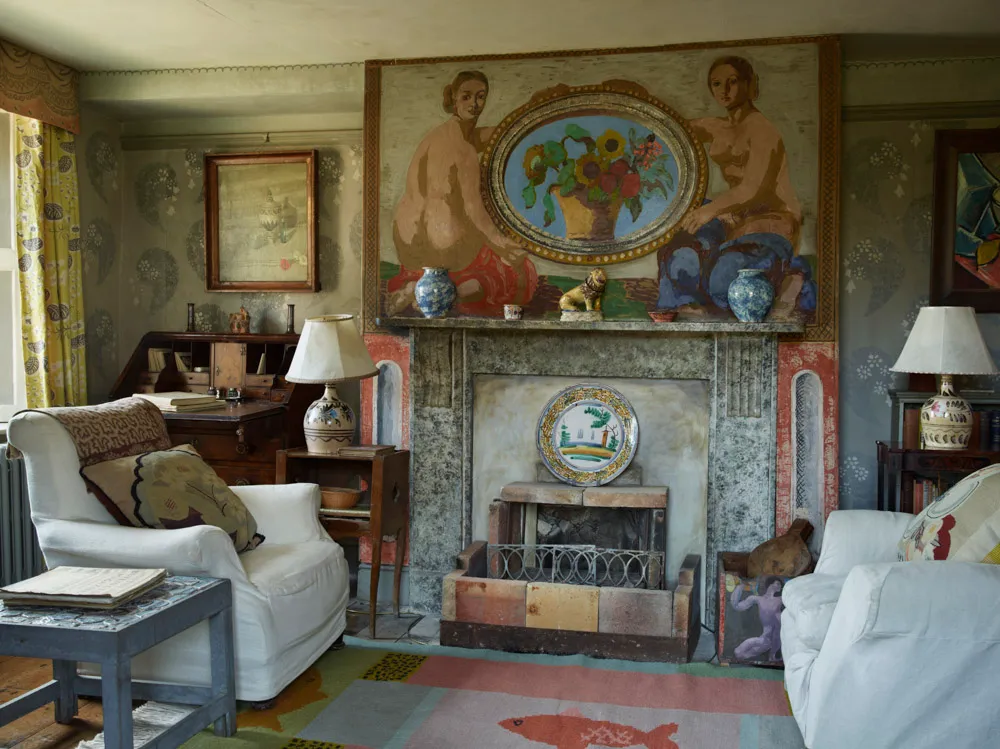
The stencilled grey and white paisley wallpaper to the left and right of the fireplace was designed by Vanessa after the war, while the curtain fabric in the garden room was designed by Duncan in 1931. The fireplace is a trompe l'oeil - it is actually plain marble decorated with blue specks.
The library
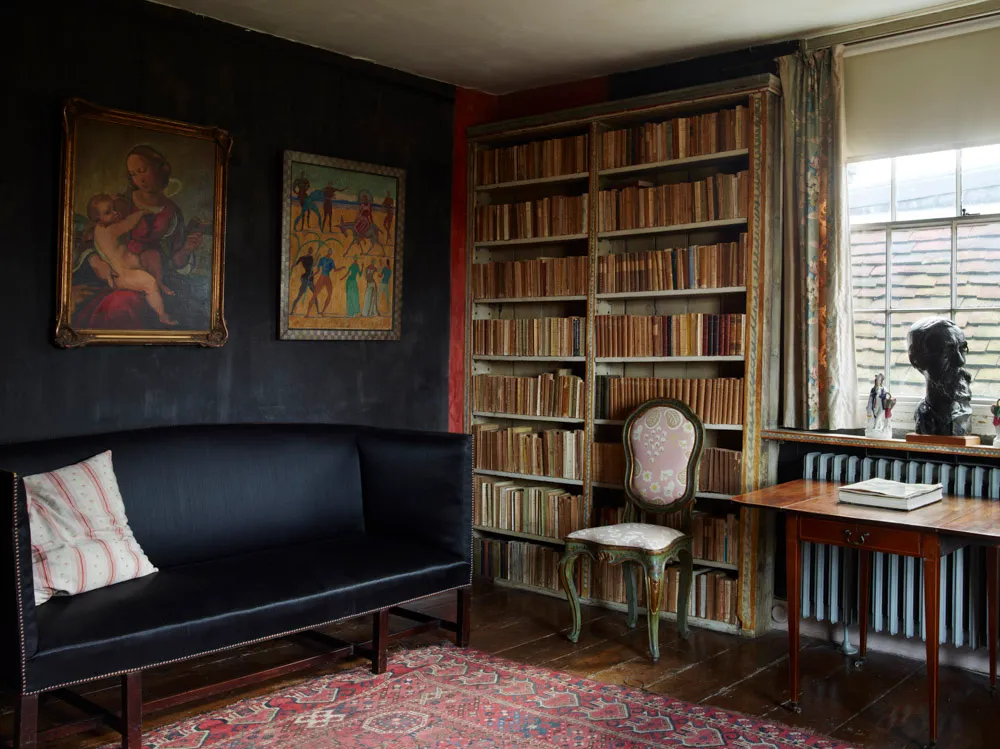
As Charleston was something of an epicentre for the intellectuals of the Bloomsbury Group, the library was well-stocked and wide-ranging. Vanessa, Duncan and the art critic Roger Fry (who Vanessa had previously been involved with) were also directors of the Omega Workshops, a design enterprise that sought to transfer the aesthetics of the post-impressionist movement on the continent into home furnishings in Britain.
Duncan's bedroom
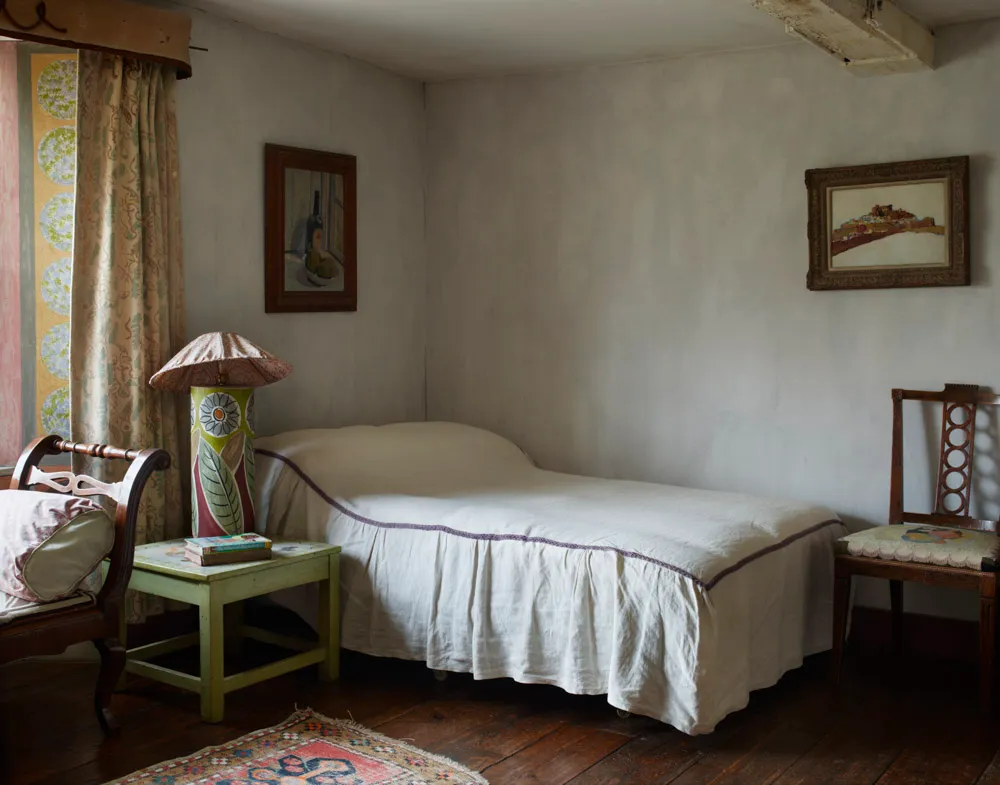
The window seat (just seen) in Duncan's bedroom is French, c1830. Duncan decorated the lamp himself. To start with the farmhouse was much more bare and the collections and furniture were built up during the time Vanessa and Duncan lived there.

A door painted by Vanessa (and completed in 1918) leads out of Duncan's bedroom into his dressing room. On entering you are immediately faced with silhouette depictions of the Grant family. Duncan came to be part of the Bloomsbury Group through the introduction of his cousin and some time lover, Lytton Strachey.
Vanessa's bedroom
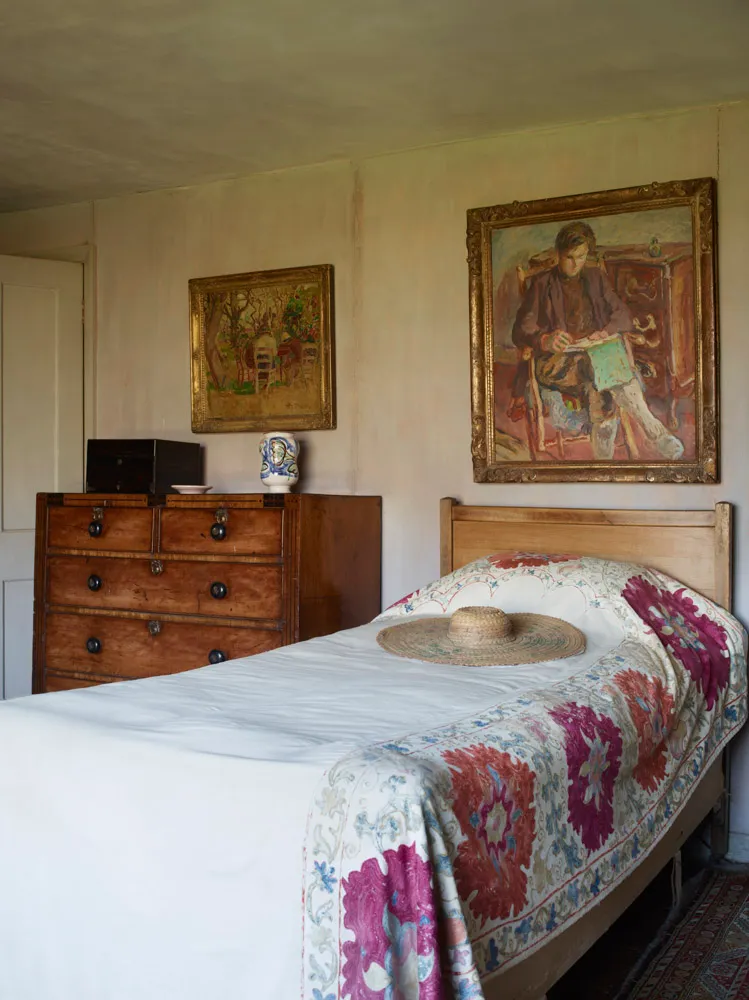
Vanessa's legacy is often overlooked in favour of her sister's literary fame, but in fact Vanessa was one of the most renowned painters of the Bloomsbury Group and exhibited in London and Paris in her lifetime. Inspired by the post-impressionists and Italian fresco painting, it was her idea to cover the walls of Charleston in the bright murals that the house has become so famed for, and that have been a major influence on designers such as Christopher Bailey at Burberry and paint specialist Annie Sloan.
Charleston Farmhouse is open for guided tours on Wednesday-Sunday afternoons, 11.30am until 3pm. 01323 811626; checkcharleston.org.ukto plan your visit and check opening times.
Images: Simon Upton